| Acoustics of the saxophone |
Bb tenor saxophone |
E7 |

|
Fingering Acoustic schematic Non-specialist introduction
to acoustic impedance Notes are the written pitch. |
This is the tenth note in the altissimo or very high range. It is not a member of a simple register: it plays at the fourth 'large-ish' peak, or the seventh peak, a cross fingered note whose operating peak falls above the cut-off frequency and so cannot readily be described in terms of an effective length.
The weakness of this peak (due to the relatively large cone angle of the saxophone) explains why notes in this range are hard to play and require the player to assist the weak impedance peak of the bore with a strong impedance peak of the vocal tract. See this page for an explanation and some interesting results.
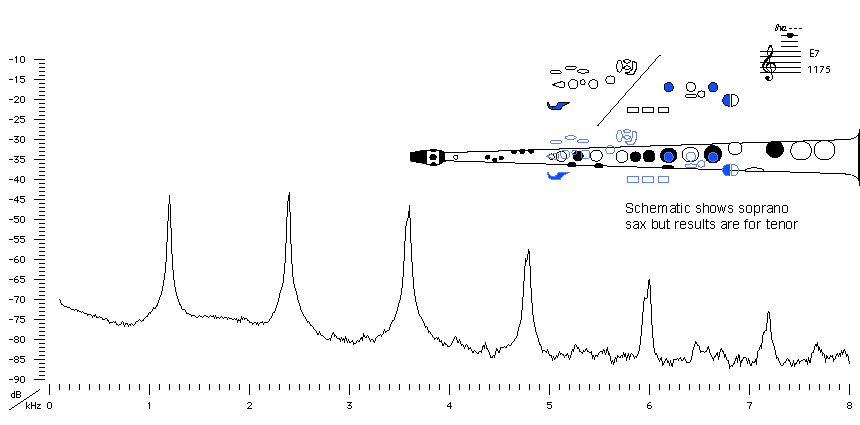
Sound spectrum
of a Bb tenor saxophone
played using fingering for E7.
For more explanation, see
Introduction to saxophone acoustics.
Alternative Fingering |
tenor saxophone |
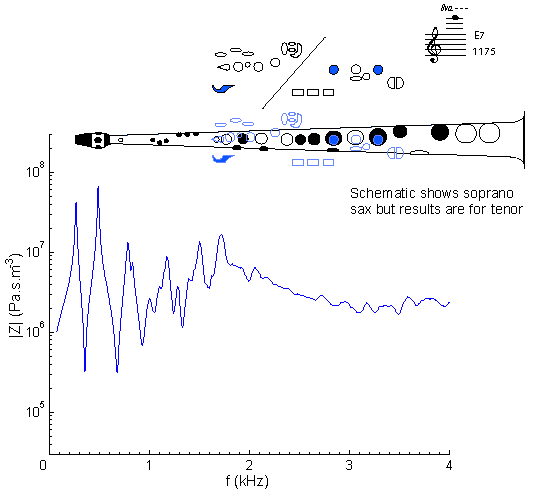 |
Fingering Acoustic schematic Non-specialist introduction
to acoustic impedance Notes are the written pitch. |
This is the tenth note in the altissimo or very high range. It is not a member of a simple register: it plays at the fourth 'large-ish' peak, or the seventh peak, a cross fingered note whose operating peak falls above the cut-off frequency and so cannot readily be described in terms of an effective length.
The weakness of this peak (due to the relatively large cone angle of the saxophone) explains why notes in this range are hard to play and require the player to assist the weak impedance peak of the bore with a strong impedance peak of the vocal tract. See this page for an explanation and some interesting results.
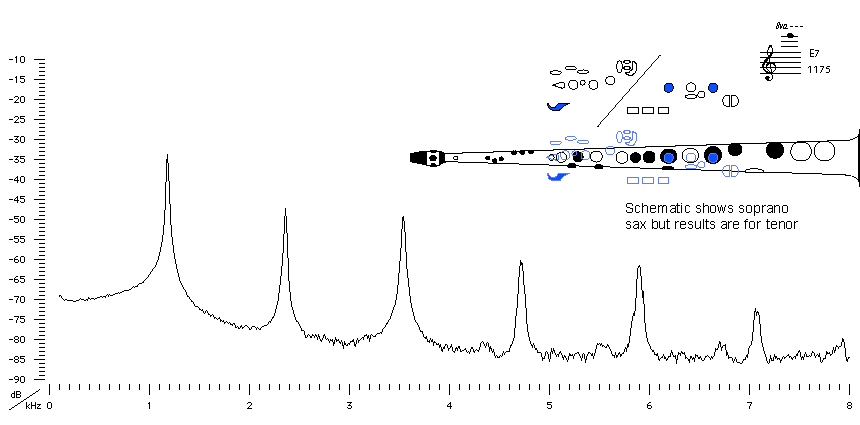
2nd alternative Fingering |
tenor saxophone |
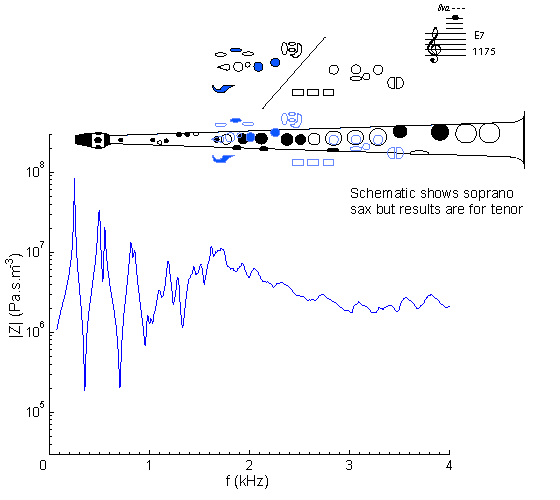 |
Fingering Acoustic schematic Non-specialist introduction
to acoustic impedance Notes are the written pitch. |
This is the tenth note in the altissimo or very high range. It is not a member of a simple register: it plays at the fourth (fifth?) 'large-ish' peak, or the ninth peak, a cross fingered note whose operating peak falls above the cut-off frequency and so cannot readily be described in terms of an effective length.
The weakness of this peak (due to the relatively large cone angle of the saxophone) explains why notes in this range are hard to play and require the player to assist the weak impedance peak of the bore with a strong impedance peak of the vocal tract. See this page for an explanation and some interesting results.
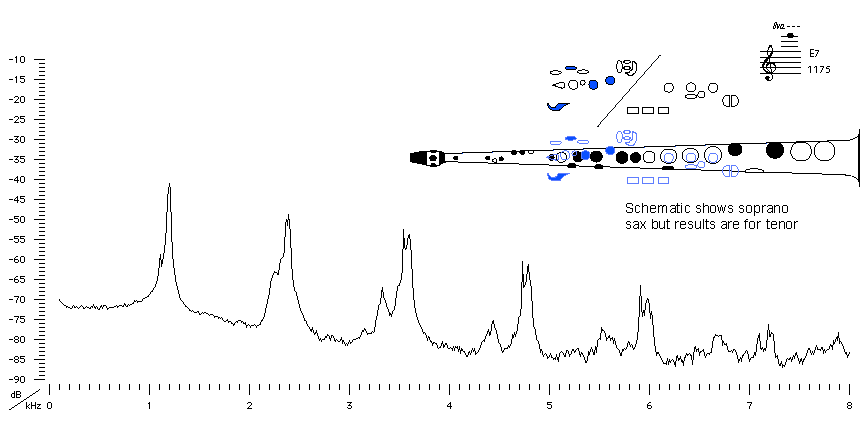
|
Contact:
Joe Wolfe
/ J.Wolfe@unsw.edu.au |